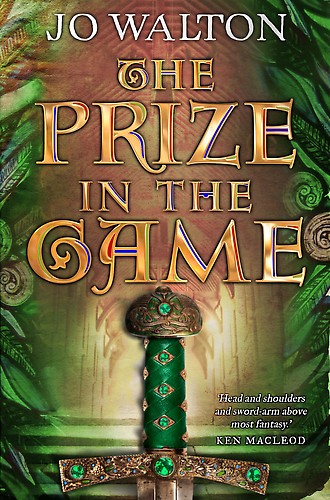Susanna Clarke’s Jonathan Strange and Mr Norrell is clearly written from an alternate universe where the great fantasy-defining genre-starting book of the twentieth century, after Dunsany, was not Tolkien’s The Lord of the Rings but Hope Mirlees Lud-in-the-Mist. It’s not a great deal like Lud-in-the-Mist, but it’s much closer to it than it is to anything else, or than Lud-in-the-Mist is to anything else.
I loved Jonathan Strange and Mr Norrell. I expected to. I’ve been waiting for a novel from Susanna Clarke since reading her story “The Ladies of Grace Adieu” in Starlight 1. “Grace Adieu” is set in the same world and has some of the concerns of the novel. I think it would be a pretty good guide for anyone liking one liking the other.
It’s written in an elegant witty true omniscient, a true omni that makes me think I should just crawl under the bed with a bucket on my head for ever thinking I could do it. (Incidentally, if you liked the voice in Tooth and Claw, which is actually SF by my definition below, you’ll love JS & MN.) It’s an omni that can get away with the most wonderful things, though unfortunately most of them are spoilers and thus unsuitable to quote. It is written in such a way that one longs to read it aloud. It made me laugh frequently, just with the beautiful way it puts things.
It’s set at the beginning of the nineteenth century, in an England that is the same but distorted by the operation of magic on history, and it concerns the bringing back of practical English magic.
What it’s about is the tension between the numinous and the known. The helical plot, which ascends slowly upwards, constantly circles a space in which the numinous and the known balance and shift and elements move between them. It’s a truly astonishing feat and I’ve never seen anything like it.
Fantasy approaches the numinous, that’s my definition of it, that’s what, for me, divides it from SF and historical fiction. There’s a problem in writing about the numinous, especially about magic that works, denizens of faerie you can converse with, in that as you approach it, it becomes mundane. It approaches Clarke’s Law from the other side, and magic risks becoming nothing but technology. The terrible enemy dissolves into an old cloak. (The Dark in Hambly’s Darwath books are the easiest example of this.) There are ways of dealing with this, which have been laboriously worked out and laboriously copied — Tolkien does it by sheer use of language, other people have explored what it would mean for magic to be technology. Magic has costs is one typical answer, seen well done in Hobb’s Farseer trilogy and Kay’s Fionavar. There’s Dean’s Dubious Hills answer, of what is numinous when magic is as everyday as making dinner. But part of the problem is the difficulty of approaching the numinous directly. Fantasy typically tries to edge around this and approach it from different directions.
Clarke goes straight at it in the structure of the novel and the balance of the novel and the plot. It’s the fulcrum of the whole thing. It’s quite incredible that she makes it work, but there it is, as one thing moves from the numinous to the known, another appears in that direction, and the whole thing pivots around the space in which this is happening, never losing anything in either direction.
I think this is the most significant thing done with this in years. It’s as if we’ve all been building sandcastles in the shadow of a cliff and suddenly Clarke has raised a great castle out of the sea with a strange light shining through the foam-water windows.


